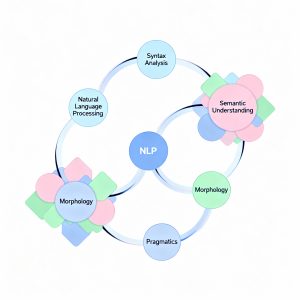What Is Analog?
Analog is a comprehensive meta-framework built on top of Angular, designed to streamline the development of full-stack applications. By integrating advanced features such as file-based routing, API endpoints, server-side rendering (SSR), and static site generation (SSG), Analog brings Angular development in line with modern frameworks like Next.js and Nuxt.js. The platform leverages Nitro for server and deployment integrations, offering developers a unified solution for both frontend and backend needs.
Getting Started with Analog
Setting up a new Analog project is straightforward. Developers can initiate a project using the create-analog package with their preferred package manager. After running the setup command, the CLI guides users through bootstrapping their application, allowing choices such as opting out of Analog’s SFC syntax or Tailwind integration for a more tailored developer experience.
Once the initial setup is complete, the development server can be started, providing a live environment for building and testing the application.
File-Based Routing for Seamless Navigation
A standout feature of Analog is its intuitive file-based routing system. Every file in the src/app/pages directory that ends with .page.ts automatically becomes a route within the application. The routing structure is determined by the file path, supporting both nested and dynamic routes. For example:
src/app/pages/index.page.tsmaps to/src/app/pages/about.page.tsmaps to/aboutsrc/app/pages/users/[id].page.tsmaps to/users/:id
This approach simplifies navigation and ensures a clean, maintainable structure for complex applications.
Creating API Routes with Analog
Analog enables developers to define backend API endpoints directly within the project. API routes are created in the src/server/routes directory and follow a filesystem-based routing convention, typically accessible under the /api prefix. For instance, a file named users.ts in this directory is available at /api/users.
Developers can customize the API prefix and define endpoints for various HTTP methods by appending method-specific suffixes to filenames, such as index.get.ts for GET requests. This system allows for rapid development of backend services without the need for a separate backend framework.
Server-Side Rendering (SSR) and Static Site Generation (SSG)
Analog offers robust support for both SSR and SSG, essential for building SEO-friendly and high-performance web applications. SSR is enabled by default, allowing the application to render HTML on the server before sending it to the client. This results in faster initial page loads and improved search engine crawlability.
For content that does not change frequently, SSG can be enabled to pre-render pages at build time, generating static HTML files that can be served efficiently. Developers can configure which routes to pre-render using the prerender option in the Analog Vite plugin.
Leveraging Vite for Enhanced Development
Analog is built on top of Vite, a modern frontend build tool known for its lightning-fast development server and optimized production builds. Vite’s integration ensures instant server start-up, hot module replacement, and a rich ecosystem of plugins for extending application functionality. This results in a smoother, more efficient development workflow and highly optimized production deployments.
Best Practices for SEO in Angular Applications
To maximize SEO performance in Angular applications built with Analog, developers should follow several key practices:
- Server-Side Rendering: Ensure SSR is enabled so search engines can crawl fully rendered HTML pages.
- Clean URLs: Use descriptive, SEO-friendly URLs via Angular Router and file-based routing.
- Metadata Management: Dynamically set page titles and meta descriptions using Angular’s Title and Meta services to provide search engines with relevant information about each page.
- Structured Data: Implement schema markup using JSON-LD to help search engines understand page content and enhance visibility in search results.
- Performance Optimization: Utilize lazy loading, code splitting, and image optimization to improve page load times, which positively impacts SEO rankings.
- Mobile Responsiveness: Design with a mobile-first approach to cater to the majority of users and improve search visibility.
- Regular Audits: Monitor SEO performance and user engagement using tools like Google Analytics, Lighthouse, and Search Console to identify and address issues proactively.
Conclusion
Analog represents a significant advancement in the Angular ecosystem, providing developers with the tools needed to build modern, scalable, and SEO-friendly full-stack applications. By combining file-based routing, integrated API endpoints, SSR/SSG, and the power of Vite, Analog streamlines the development process and delivers a superior user and developer experience.
Whether building a simple blog or a complex enterprise application, Analog equips Angular developers with the flexibility and performance required to succeed in today’s web landscape.
Read more such articles from our Newsletter here.



